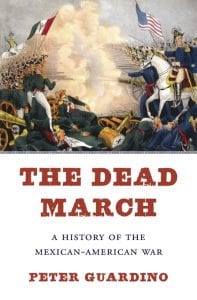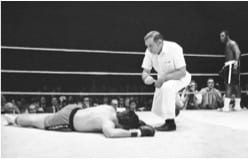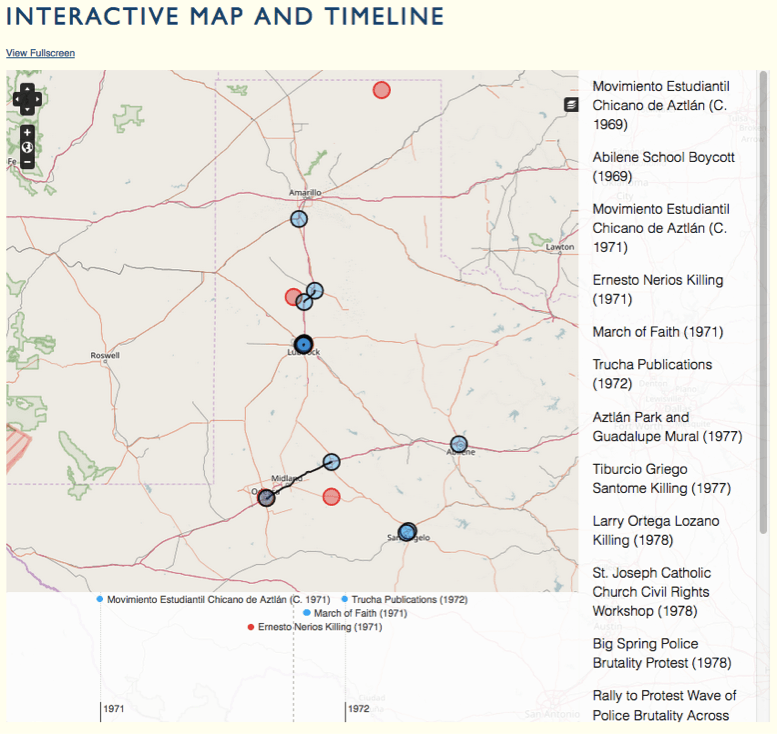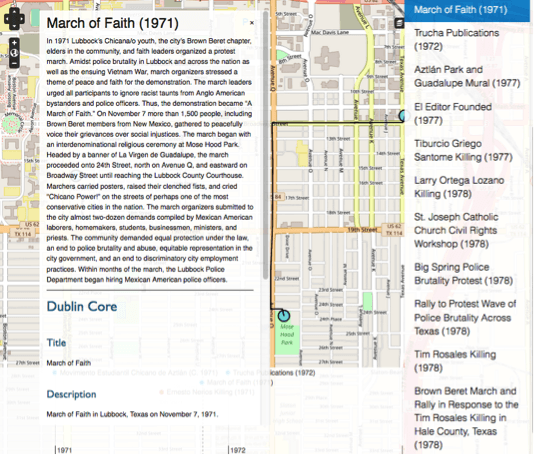By Joshua Tracy
“What do you think about Trump’s border wall?” As an historian of the Rio Grande and its environment I get that question often. While discussions vary in length and detail, they all conclude in the same way: it is complicated. Contemporary issues, such as funding and politics in and between the United States and Mexico, make the reality of a contiguous wall from the Gulf of Mexico to the Pacific Ocean difficult although not impossible. Along with these present-day problems, historical perspectives on the relative novelty of borders and the efficacy of walls also beg the question: would a wall even work as intended, namely at stopping people from illegally entering through the southern border of the United States?

One of the things I tell people is that borders—lines that separate one political entity from another—are relatively new historical developments. Yes, people and empires have designated territories for themselves for millennia. These areas, however, collided into one another, blurring the lines of control and creating places where little to no power existed, empirical or otherwise. Borders changed all of this. Beginning in the seventeenth century, burgeoning nation-states went through the process of what Peter Sahlins calls the “territorialization of sovereignty.”[1] Essentially, nation-states wanted and established geographical definition of their jurisdiction with lines separating one state from another.
For the United States and Mexico, these lines were part of the Treaty of Guadalupe Hidalgo. Signed on February 2, 1848, the treaty not only ended the Mexican-American War, but also set the boundaries between the two nations from the Gulf of Mexico to the Pacific. Establishing the border on paper was easy; making it a reality was much more difficult. The United States purchased more land in 1853, pushing the southern border of what would be Arizona further into Mexico. The Rio Grande—a meandering, shallow, and flood-prone river—constantly shifted, making Article V of the Treaty of Guadalupe, which stipulated that the boundary line would follow the deepest channel of the river, a logistical nightmare. Determining the border took decades, with legal battles over tracts of land lasting well into the twentieth century. The U.S.-Mexico border, then, is in its historical infancy.
 If borders in general and the U.S.-Mexico border specifically are relatively new historical developments, walls are most certainly not. If anything, they have seemingly existed since time immemorial, with Hadrian’s Wall, the Great Wall of China, and the Berlin Wall all attesting to the long-held belief in separating one area from another. Vestiges of these walls still exist, along with a simple question: did they work? In some ways, the answer is obvious. By their very nature, walls provide a physical barrier between two places, making it difficult for people who wish to cross, legally or otherwise. Moreover, walls, and–as is often the case now–fences, usually have very real and often violent consequences. Take, for example, the Berlin Wall, where between 86 and 262 people died and another 75,000 were arrested, serving prison sentences for up to eight years for “deserting the public.”[2] At the same time, people still found their way across the heavily fortified and guarded wall, with tens of thousands of East Berliners managing to escape “by climbing over the wall, digging under the wall, flying over the wall, [and] hiding in secret compartments of cars.”[3]
If borders in general and the U.S.-Mexico border specifically are relatively new historical developments, walls are most certainly not. If anything, they have seemingly existed since time immemorial, with Hadrian’s Wall, the Great Wall of China, and the Berlin Wall all attesting to the long-held belief in separating one area from another. Vestiges of these walls still exist, along with a simple question: did they work? In some ways, the answer is obvious. By their very nature, walls provide a physical barrier between two places, making it difficult for people who wish to cross, legally or otherwise. Moreover, walls, and–as is often the case now–fences, usually have very real and often violent consequences. Take, for example, the Berlin Wall, where between 86 and 262 people died and another 75,000 were arrested, serving prison sentences for up to eight years for “deserting the public.”[2] At the same time, people still found their way across the heavily fortified and guarded wall, with tens of thousands of East Berliners managing to escape “by climbing over the wall, digging under the wall, flying over the wall, [and] hiding in secret compartments of cars.”[3]
As for the United States, the extant border fence covers about 650-700 of the roughly 2000 mile border between the United States and Mexico, with statistics showing that it has greatly reduced the inflow of illegal immigration over a ten year period. From 2005 to 2015, the number of successful illegal entries of Mexican immigrants dropped from 1,900,000 to 200,000, roughly a 90% decrease.[4] In the year since Trump has taken office, attempted illegal crossings from Mexico have hit a 46 year low, with U.S. border patrol agents arresting 310,531 people through September 30, 2017 (the end of the U.S. government’s fiscal year).[5] Between the current border fence, Trump’s anti-immigrant rhetoric and policies, and a steadily decreasing trend of illegal immigration, a wall along the 2000-mile border would most likely further deter people from entering into the United States via the border.
But even if the wall were to be built, and even if it decreased immigration, would it really “work”? That obviously depends on the definition of “work.” For Americans who want stricter immigration policies, Trump’s wall probably seems like a reasonable, if not genius, idea. For those Americans, however, who believe in more open borders and/or loose immigration policies, the wall in all likelihood seems like a poor solution to a humanitarian problem. As historian Rachel St. John states, “whether or not they successfully reduce the number of unauthorized entries by immigrants and smugglers, fences [or walls] are a failure of relational power.”[6] For some people, then, erecting walls or threatening to build them only exacerbates problems, propagating “Us vs. Them” rhetoric and deteriorating international relations.
Trump’s proposed border wall has multiple issues to address before it can become a reality. Hopefully he and his administration can look to the past to make a more informed decision about the future of the U.S.-Mexico border, taking into consideration the rather novel idea that borders must be protected and that walls are the best way of doing so. Former Arizona Governor and U.S. Secretary of Homeland Security Secretary Janet Ann Napolitano once said, “Show me a 50-foot wall, and I’ll show you a 51-foot ladder.” Regardless of the barrier, people will still come. Maybe we should leave walls in the past and look for a better way to protect national borders.
[1] Peter Sahlins, Boundaries: The Making of France and Spain in the Pyrenees (Berkeley and Los Angeles: The University of California Press, 1989), 8.
[2] Helmut Langerbein, “Great Blunders?: The Great Wall of China, the Berlin Wall, and the Proposed United States/Mexico Border Fence,” The History Teacher Vol. 43, No. 1 (November 2009), 22.
[3] Ibid.
[4] Daniel González, “How Many Mexicans Actually Cross the Border Illegally,” https://www.azcentral.com/story/news/politics/border-issues/2016/10/09/how-many-mexicans-actually-cross-border-illegally/91280026/. Accessed January 6, 2018.
[5] Nick Miroff, “Arrests Along Mexico Border Drop Sharply Under Trump, New Statistics Show,” https://www.washingtonpost.com/world/national-security/arrests-along-mexico-border-drop-sharply-under-trump-new-statistics-show/2017/12/05/743c6b54-d9c7-11e7-b859-fb0995360725_story.html?utm_term=.61e8717ed0d6. Accessed January 4, 2018.
[6] Rachel St. John, Line in the Sand: A History of the Western U.S.-Mexico Border (Princeton: Princeton University Press, 2011), 206.


 on a roundtable about the legacy of revolutions in the Atlantic world. Cynthia Bouton kicked off the discussion with her exploratory paper on the role of subsistence in the Caribbean during the era of revolutions. Looking at Haiti particularly, she questioned the role French colonies played in the French Revolutionary program based on the food commitments France made to the island. Building on Michel-Rolph Trouillot, she posited that peripheries drove the centers since they demanded constant attention and maintenance. Manuel Covo, in his paper, asked similar questions about the relationship between Haiti and France, but in the context of the historiography of each nation’s revolution. Noticing that Haiti rarely appears in the French national narrative, he made a call for more global histories, especially regarding the age of revolutions. Also with a nod to Trouillot, Covo claimed that national histories and historiographies too often obscure important trends, themes, and arguments made on the global stage. Caitlin Fitz shifted the discussion to the United States and its role in this period. She provided insights into how Americans viewed the Latin American revolutions, specifically the abolitionist trend that went with them. She concluded that the seeming U.S. support for Latin America’s revolutions was quite shallow as Americans tended to focus on how those revolutions related to the American Revolution. Since Latin America’s push for abolition did not seem to threaten American slavery in the eyes of Southern slave holders, it was easy to support their movements until the Panama Conference drove Latin American abolition to the U.S. political stage. Finally, Lester Langley provided his thesis that the entire Western Hemisphere needs to be studied and taught as a coherent unit. The discussion after the papers proved quite lively as the presenters debated the role the American Revolution played to initiate change while also maintaining slavery as a cornerstone institution in the United States.
on a roundtable about the legacy of revolutions in the Atlantic world. Cynthia Bouton kicked off the discussion with her exploratory paper on the role of subsistence in the Caribbean during the era of revolutions. Looking at Haiti particularly, she questioned the role French colonies played in the French Revolutionary program based on the food commitments France made to the island. Building on Michel-Rolph Trouillot, she posited that peripheries drove the centers since they demanded constant attention and maintenance. Manuel Covo, in his paper, asked similar questions about the relationship between Haiti and France, but in the context of the historiography of each nation’s revolution. Noticing that Haiti rarely appears in the French national narrative, he made a call for more global histories, especially regarding the age of revolutions. Also with a nod to Trouillot, Covo claimed that national histories and historiographies too often obscure important trends, themes, and arguments made on the global stage. Caitlin Fitz shifted the discussion to the United States and its role in this period. She provided insights into how Americans viewed the Latin American revolutions, specifically the abolitionist trend that went with them. She concluded that the seeming U.S. support for Latin America’s revolutions was quite shallow as Americans tended to focus on how those revolutions related to the American Revolution. Since Latin America’s push for abolition did not seem to threaten American slavery in the eyes of Southern slave holders, it was easy to support their movements until the Panama Conference drove Latin American abolition to the U.S. political stage. Finally, Lester Langley provided his thesis that the entire Western Hemisphere needs to be studied and taught as a coherent unit. The discussion after the papers proved quite lively as the presenters debated the role the American Revolution played to initiate change while also maintaining slavery as a cornerstone institution in the United States.
 Slavery.” All the papers added significantly to the discussion of that contentious field. Ian Beamish showed that, in fact, planters kept terrible accounting records, meaning they likely did not contribute specifically to modern corporate accounting as the historiography previously hypothesized. Justene Hill presented her research that suggests that ideas of efficiency and paternalism combined in the discourse of the slave economy which fed into the proslavery arguments of the mutual dependence of slaves and slaveowners and slavery as a positive good. John Lindbeck, in the last paper of the panel, connected evangelicalism to the ideas of slavery and capitalism. He argued that planters ran efficient evangelical finance networks to create “God’s proslavery kingdom.” The kinship and finance networks planters built in the church tied faith and family to the business of slavery. Afterward, the discussion revealed the divide among historians about the validity of the study of capitalism and slavery. While the panelists fielded questions about the definitions of capitalism and paternalism, the debate spilled out into the crowd as individuals provided their own commentary to the questions asked. The fireworks that concluded the panel provided insights into how historians work out contentiousness in their field.
Slavery.” All the papers added significantly to the discussion of that contentious field. Ian Beamish showed that, in fact, planters kept terrible accounting records, meaning they likely did not contribute specifically to modern corporate accounting as the historiography previously hypothesized. Justene Hill presented her research that suggests that ideas of efficiency and paternalism combined in the discourse of the slave economy which fed into the proslavery arguments of the mutual dependence of slaves and slaveowners and slavery as a positive good. John Lindbeck, in the last paper of the panel, connected evangelicalism to the ideas of slavery and capitalism. He argued that planters ran efficient evangelical finance networks to create “God’s proslavery kingdom.” The kinship and finance networks planters built in the church tied faith and family to the business of slavery. Afterward, the discussion revealed the divide among historians about the validity of the study of capitalism and slavery. While the panelists fielded questions about the definitions of capitalism and paternalism, the debate spilled out into the crowd as individuals provided their own commentary to the questions asked. The fireworks that concluded the panel provided insights into how historians work out contentiousness in their field.
 Throughout the book, Guardino builds a sustained and compelling case against a myth that has long haunted interpretations of the Mexican-American War in both countries. This myth suggests that Mexico lost the war primarily because it lacked the stability and national unity of its northern neighbor. Guardino, on the other hand, shows that the war’s outcome had far more to do with the economic and social disparities between the two countries. An assortment of geographical, political, and social forces combined to give the U.S. a strong material advantage. At the same time, costly mobilization efforts, a violent U.S. occupation, and the U.S. Navy’s blockade of Mexican ports compounded Mexico’s already dire economic situation and aggravated its internal conflicts. The loss of revenue from import duties crippled the financially strapped Mexican state, while the war’s demands further burdened a society already living on an economic knife-edge. Given this harsh reality, Guardino shows that the fierce and sustained resistance that Mexicans made against the U.S. invasion was nothing short of remarkable. Working to overcome deep internal divisions and constantly weighing the stark realities of personal and family survival, Mexicans from all walks of life contributed to and participated in the war effort. In doing so, they unequivocally declared and demonstrated their Mexican nationalism. “In short,” Guardino concludes, “Mexico lost the war because it was poor, not because it was not a nation” (367).
Throughout the book, Guardino builds a sustained and compelling case against a myth that has long haunted interpretations of the Mexican-American War in both countries. This myth suggests that Mexico lost the war primarily because it lacked the stability and national unity of its northern neighbor. Guardino, on the other hand, shows that the war’s outcome had far more to do with the economic and social disparities between the two countries. An assortment of geographical, political, and social forces combined to give the U.S. a strong material advantage. At the same time, costly mobilization efforts, a violent U.S. occupation, and the U.S. Navy’s blockade of Mexican ports compounded Mexico’s already dire economic situation and aggravated its internal conflicts. The loss of revenue from import duties crippled the financially strapped Mexican state, while the war’s demands further burdened a society already living on an economic knife-edge. Given this harsh reality, Guardino shows that the fierce and sustained resistance that Mexicans made against the U.S. invasion was nothing short of remarkable. Working to overcome deep internal divisions and constantly weighing the stark realities of personal and family survival, Mexicans from all walks of life contributed to and participated in the war effort. In doing so, they unequivocally declared and demonstrated their Mexican nationalism. “In short,” Guardino concludes, “Mexico lost the war because it was poor, not because it was not a nation” (367).





